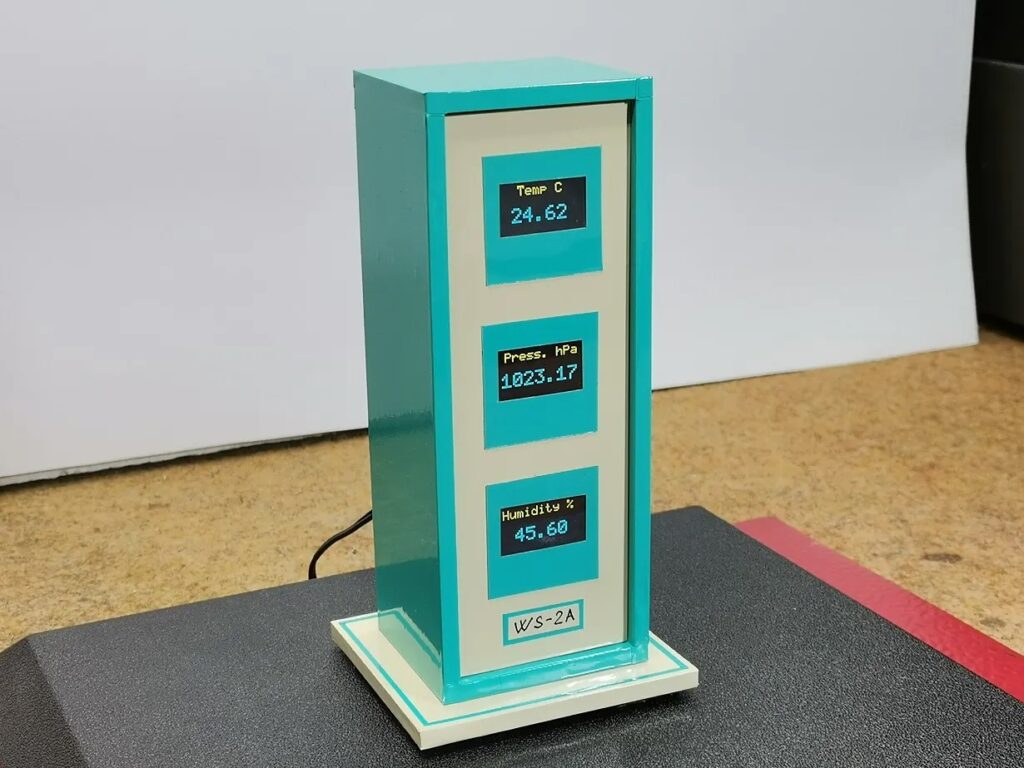This classic weather station prioritizes the essentials

Weather stations are very popular projects for people new to Arduino. They’re complex enough to help a person learn new skills, but they’re simple enough to be approachable. However, that popularity has led to something of an arms race, with many makers attempting to design the most impressive weather stations on the internet. If you want to go back to the basics to dip your toes into the water, Mirko Pavleski explains how to build a classic weather station that prioritizes the essentials.
Inspired by older devices that displayed information like temperature, barometric pressure, and humidity on analog gauges, Pavleski chose a design with three screens in a vertical stack. Each screen can display whatever data the user can access through a sensor. In this case, his station utilizes the popular BME280 module that monitors the same three parameters as the vintage inspiration: temperature, pressure, and humidity.
This weather station shows each reading on a small two-tone OLED screen. Those screens have yellow pixels on the top and blue pixels on the bottom, which is handy for distinguishing the title from the data without the expense or complexity of a full-color screen.
An Arduino Nano board reads the data from the BME280 sensor and writes to the displays. But those displays and the BME280 all connect through I2C. To interface with all of them through the single pair of SCL/SDA pins, Pavleski included a TCA9548a multiplexer module.
Those components all mount in a minimalist enclosure made from foam board. And while we certainly enjoy complex weather stations, we appreciate the simplicity and approachability of this design.